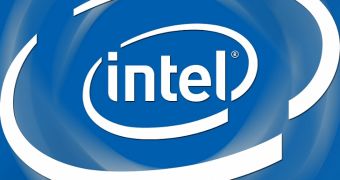Currently, Intel is holding its IDF (Intel Developer Forum) in San Francisco, California. The show is staking place from September 10 to September 12, 2013. Among other things, the company has revealed its broad plans for the near- and mid-term.
First off, the emphasis on manufacturing leadership, as Intel calls it, remains. A 14nm "Broadwell" system was even demonstrated. The Atom mobile CPU and SoC brand will be the next to benefit from Chipzilla's considerable chip architecture acumen.
Secondly, Intel will move faster on the mobile front. The first 22nm system-on-a-chip (SoC) for mobile devices, called Atom "Bay Trail," should be out this week, mostly as part of 2 in 1 devices.
Supposedly, tablets and smartphones won't be the goal for long, not with wearable devices rising (smartwatches and glasses).
Besides a new processing platform, Intel's new CEO Brian Krzanich said that a better 4G/LTE wireless technology would be implemented as well.
Then, there's the Intel Quark processor family, even more focused on power efficiency, something that the chip giant has finally caught up with ARM in, more or less.
They will show up in what Intel dubs "growing segments from the industrial Internet-of-Things to wearable computing."
Sample form-factor reference boards will be shipped during the fourth quarter of this year (2013), and there is a 4G modem in the works as well (Intel XMM 7160), described as one of the world's smallest and lowest-power multimode-multiband solutions, as far as global LTE roaming goes.
The carrier aggregation feature on the modem effectively doubled throughput speeds during the new CEO's keynote presentation.
Finally, the Merrifield Intel Atom SoC for 2014 smartphones, based on Silvermont microarchitecture, had better performance, power-efficiency and battery life compared to existing chips, as expected.
Basically, with existing mobile products taking off and new categories on the rise (2-in-1 devices, wearable gadgets), Intel only expects to grow.
That leaves re-architecting data centers and facilitating the move of the world from today's way of life to megacities (by 2050). All in all, Intel will definitely be busy from now on.

 14 DAY TRIAL //
14 DAY TRIAL //